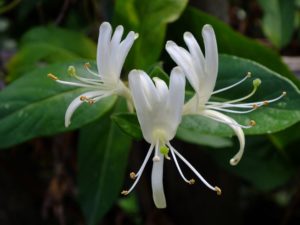Source: mnn.com
Published: August 3, 2016

A new type of honeysuckle could keep air cleaner in cities where pollution-reduction goals will take some time to meet. (Photo: haris M/Shutterstock
Urban air pollution is a huge public health issue — it kills more than 3 million people every year, according to the latest World Health Organization estimates (more than AIDS and malaria combined). And for the people breathing it every day, bad air can cause chronic health issues such as asthma and emphysema.
“The cost for countries is enormous. Air pollution affects economies and people’s quality of life. It leads to major chronic diseases and to people ultimately dying,” Dr. Maria Neira, director of public health at the World Health Organization in Geneva, told The Guardian.
As cities from Beijing to Paris to Sydney focus on reducing car traffic as a way to improve air quality, the city of Amsterdam is really ahead of the pack. In about 10 years, gas-powered cars in the city will be banned. Their bus fleet is moving from diesel to electric, which by 2025, will be powered by solar and wind.
Here’s where honeysuckle could help
While major transportation and infrastructure changes take time, researchers at the Wageningen University in The Netherlands are testing a more immediate solution: a new type of honeysuckle called Green Junkie. This new honeysuckle is bred to consume more carbon dioxide — in other words, it eats smog.
“The parts of a plant that pick up air pollution out of the air are the ‘hairs,’ so what they’ve changed for this honeysuckle is that they’ve made it very, very hairy,” Emily Parry from AMS Institute, told FastCoExist. The leaves of the plant are bigger and hairier than typical honeysuckle, and they grow more quickly, too. And it’s fed with a special organic fertilizer made with plant waste collected from the city.
Right now, it’s not clear how significant the impact of this new honeysuckle could be, and researchers will know more this fall when testing has concluded.
It makes sense that plants would be hybridized for pollution cleanup of a specific kind. Many plants absorb pollution — so much so that NASA has long promoted a list of those that can keep indoor air cleaner — and many homeowners choose plants that are particularly good at doing so. Some grasses and ivy are already used in traffic medians and roadsides specifically because they can reduce particulate pollution by up to 60 percent.
This video shows how a European Union research project is using a specific kind of moss to fight pollution:
Click here to watch “Biotechnology to fight air pollution – futuris”: https://youtu.be/8ZXRDovD5MQ
Many of us imagine cities of the future as more verdant spaces than they are today. If some plants can keep air cleaner for urban residents while adding green to the landscape, they’ll provide double the benefit for us.
